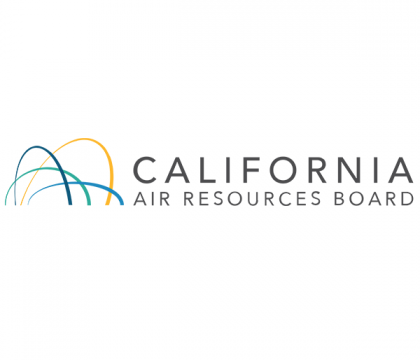2025 Shultz Energy Fellowships: California Air Resources Board, Building Embodied Carbon Team
Regional-, state-, and city-level efforts are essential in our fight against climate change, especially in the field of energy. Stanford University is committed to helping by integrating its students into energy and climate ecosystems in the West through the Shultz Energy Fellowships program, an energy-related summer fellowship program for undergraduate and graduate students.
Named in honor of former Secretary of State George P. Shultz, one of the most widely admired American public servants of the past half-century, the program offers a suite of paid, energy-related public service fellowships for Stanford students in California, Colorado, Hawaii, Nevada, and Utah during the summer.
The fellowships run from Monday, June 23, 2025 to Friday, August 29, 2025.
Organization/Agency mission or role in state government
The California Air Resources Board (CARB) is charged with protecting the public from the harmful effects of air pollution and developing programs and actions to fight climate change. CARB’s mission is to promote and protect public health, welfare, and ecological resources through effective reduction of air pollutants, while recognizing and considering impacts on the economy. As the lead agency for climate change programs, CARB oversees all air pollution control efforts in California to attain and maintain health-based air quality standards.
California has committed to reducing greenhouse gas (GHG) emissions by 40 percent below 1990 levels by 2030 and achieving carbon neutrality no later than 2045. Buildings and building materials represent a significant source of emissions. California’s push for building decarbonization has already cut operational emissions via energy efficiency measures, renewable energy adoption, and building electrification. However, embodied carbon—the lifecycle GHG emissions associated with extraction, manufacturing, transportation, installation, maintenance, and disposal of building materials—now accounts for the majority of total building-related emissions for new construction.
In 2022, Assembly Bill 2446 (Holden) directed CARB to develop a framework for measuring and reducing the carbon intensity of building materials, targeting a 40 percent net reduction in GHG emissions by the end of 2035. In 2023, Assembly Bill 43 (Holden) further updated the statute, and provided an option for CARB to explore an embodied carbon trading system as a path toward implementing the GHG emissions reduction strategy. CARB’s Building Embodied Carbon Team is at the forefront of this work—evaluating feasible, low-cost-impact strategies, collaborating with state agencies, and leveraging the CALGreen Carbon Reduction Collaborative to ensure the building sector can meet California’s ambitious climate and housing goals.
Potential Areas for Fellowship Projects
The selected Fellow will focus on how operational emissions interrelate with embodied carbon. Depending on his or her interests and skills, the Fellow may choose one of the following projects - or combine elements of both - in consultation with his or her mentor.
-
Quantifying the physical and operational impacts of insulation materials:
- Conduct LCAs of common insulation materials (e.g. fiberglass, cellulose, mineral wool, foam-based products) to compare embodied carbon with operational energy savings in different California climate zones.
-
Key questions:
- Which insulation materials offer the greatest net GHG savings when intrinsic and operational impacts are considered? How do regional climate differences in California affect this result?
-
What strategies (e.g. financial incentives, building code updates) could encourage wider adoption of low-carbon insulation?
-
Evaluating HVAC Refrigerants and Building Energy Sources:
- Conduct LCAs of HVAC systems (e.g. chillers, boilers, heat pumps) to identify the main contributors to embodied carbon, focusing on materials, manufacturing, installation and disposal.
- Explore design optimizations (e.g. low-GWP refrigerants, system sizing, equipment selection) that reduce embodied and operational emissions.
-
Key questions:
- Which HVAC components and materials contribute the most to embodied carbon, and what alternatives or design optimizations could reduce the overall footprint?
- How do different HVAC configurations (centralized or distributed, integrated with envelope measures, etc.) affect lifecycle carbon emissions?
What policy tools can encourage equitable retrofits of HVAC systems in California's diverse building stock?
Potential Mentor
- Leo Guillotte, Air Resources Engineer, Building Embodied Carbon Analysis Team
Work Environment
It is anticipated that this fellowship opportunity will be remote. The California Air Resources Board is located in Sacramento, CA.
2024 Shultz Grad Fellow at CARB
- Max Kessler, PhD ’26 Mechanical Engineering
- Learn more about Max's experience at CARB:
- Basic understanding of California's climate change goals, public policy and the importance of decarbonizing buildings.
- Excellent communication skills (written and oral).
- Familiarity with LCA methodologies, building energy modeling or sustainability frameworks (preferred but not required).
- A major in engineering, the physical sciences, and/or public policy is an applicable background for this fellowship.
All Shultz fellows must be enrolled in the spring quarter before their fellowship.
All Shultz fellows must take a one-unit spring workshop course, 'Energy Policy in California and the West' taught by Professor Bruce Cain and Visiting Fellow Felicia Marcus that will provide an in-depth analysis of the role of California state agencies, the Western Interstate Energy Board, and the Western Electricity Coordinating Council in driving energy policy development, technology innovation, and market structures. Course number is CEE 263G / POLISCI 73 / PUBLPOL 73 / ENERGY 73. Schedule: Wednesdays from 1:30 pm - 2:50 pm.
Please note that this opportunity is open to both undergraduate and graduate students with a preference for graduate students in the selection process.
